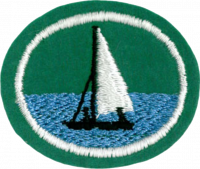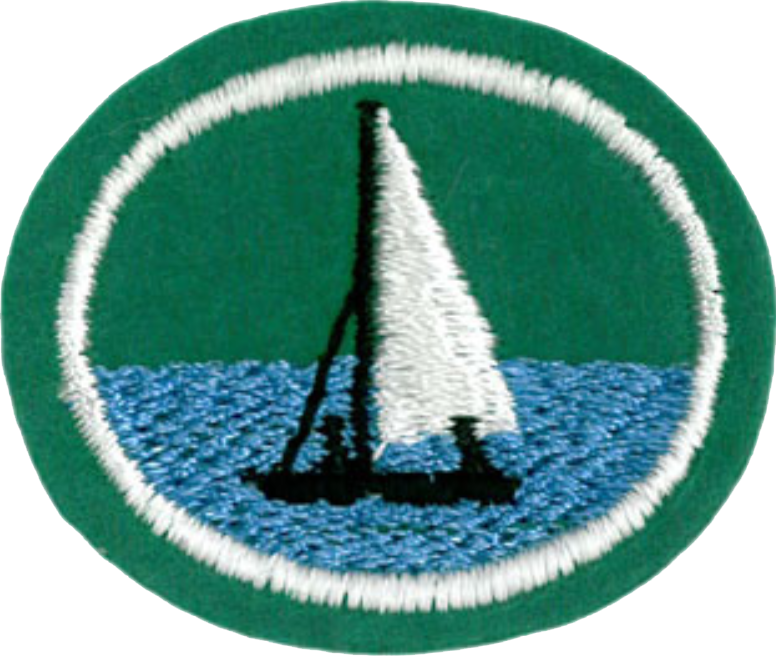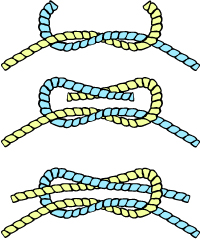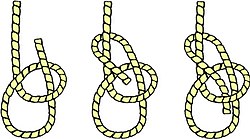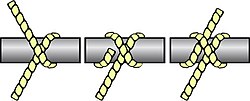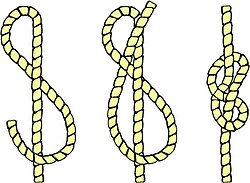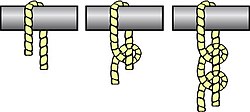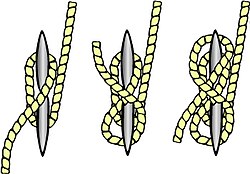Difference between revisions of "AY Honors/Sailing/Answer Key/es"
From Pathfinder Wiki
(Created page with "{{clear}}") |
(Updating to match new version of source page) |
||
| (45 intermediate revisions by 2 users not shown) | |||
| Line 1: | Line 1: | ||
| − | + | {{HonorSubpage}} | |
| − | + | <!--{{Honor_Master|honor=Sailing|master=Aquatic}}--> | |
| − | {{ | ||
| − | |||
| − | |||
| − | |||
| − | |||
| − | |||
| − | |||
| − | |||
| − | }} | ||
| − | |||
| − | {{Honor_Master | ||
| − | |||
| − | |||
| − | |||
<section begin="Body" /> | <section begin="Body" /> | ||
{{ansreq|page={{#titleparts:{{PAGENAME}}|2|1}}|num=1}} | {{ansreq|page={{#titleparts:{{PAGENAME}}|2|1}}|num=1}} | ||
<noinclude></noinclude> | <noinclude></noinclude> | ||
| − | <!-- | + | <!-- 1. Tener la especialidad de Natación II. --> |
| − | {{honor_prerequisite| | + | {{honor_prerequisite|displayname=Natación II|honor=Swimming - Intermediate}} |
<noinclude></noinclude> | <noinclude></noinclude> | ||
| Line 25: | Line 11: | ||
{{ansreq|page={{#titleparts:{{PAGENAME}}|2|1}}|num=2}} | {{ansreq|page={{#titleparts:{{PAGENAME}}|2|1}}|num=2}} | ||
<noinclude></noinclude> | <noinclude></noinclude> | ||
| − | <!-- 2. | + | <!-- 2. Conocer las «reglas generales» para la navegación. --> |
| − | {{: | + | {{:AY Honors/Sailing/Rules of the road/es}} |
<noinclude></noinclude> | <noinclude></noinclude> | ||
| Line 32: | Line 18: | ||
{{ansreq|page={{#titleparts:{{PAGENAME}}|2|1}}|num=3}} | {{ansreq|page={{#titleparts:{{PAGENAME}}|2|1}}|num=3}} | ||
<noinclude></noinclude> | <noinclude></noinclude> | ||
| − | <!-- 3. | + | <!-- 3. Saber cómo las condiciones meteorológicas y las condiciones de alto oleaje pueden afectar a la seguridad y el desempeño de la vela. --> |
<noinclude></noinclude> | <noinclude></noinclude> | ||
{{CloseReq}} <!-- 3 --> | {{CloseReq}} <!-- 3 --> | ||
{{ansreq|page={{#titleparts:{{PAGENAME}}|2|1}}|num=4}} | {{ansreq|page={{#titleparts:{{PAGENAME}}|2|1}}|num=4}} | ||
<noinclude></noinclude> | <noinclude></noinclude> | ||
| − | <!-- 4. | + | <!-- 4. ¿Qué precauciones de seguridad deben seguirse cuando se navega a vela? --> |
<noinclude></noinclude> | <noinclude></noinclude> | ||
{{CloseReq}} <!-- 4 --> | {{CloseReq}} <!-- 4 --> | ||
{{ansreq|page={{#titleparts:{{PAGENAME}}|2|1}}|num=5}} | {{ansreq|page={{#titleparts:{{PAGENAME}}|2|1}}|num=5}} | ||
<noinclude></noinclude> | <noinclude></noinclude> | ||
| − | <!-- 5. | + | <!-- 5. Con la ayuda de un amigo, hacer lo siguiente: --> |
<noinclude></noinclude> | <noinclude></noinclude> | ||
{{ansreq|page={{#titleparts:{{PAGENAME}}|2|1}}|num=5a}} | {{ansreq|page={{#titleparts:{{PAGENAME}}|2|1}}|num=5a}} | ||
| Line 86: | Line 72: | ||
{{ansreq|page={{#titleparts:{{PAGENAME}}|2|1}}|num=6}} | {{ansreq|page={{#titleparts:{{PAGENAME}}|2|1}}|num=6}} | ||
<noinclude></noinclude> | <noinclude></noinclude> | ||
| − | <!-- 6. | + | <!-- 6. Saber cómo amarrar y usar los siguientes nudos: --> |
<noinclude></noinclude> | <noinclude></noinclude> | ||
{{ansreq|page={{#titleparts:{{PAGENAME}}|2|1}}|num=6a}} | {{ansreq|page={{#titleparts:{{PAGENAME}}|2|1}}|num=6a}} | ||
<noinclude></noinclude> | <noinclude></noinclude> | ||
| − | {{: | + | {{:AY Honors/Knot/Square/es}} |
<noinclude></noinclude> | <noinclude></noinclude> | ||
| Line 96: | Line 82: | ||
{{ansreq|page={{#titleparts:{{PAGENAME}}|2|1}}|num=6b}} <!--T:7--> | {{ansreq|page={{#titleparts:{{PAGENAME}}|2|1}}|num=6b}} <!--T:7--> | ||
<noinclude></noinclude> | <noinclude></noinclude> | ||
| − | {{: | + | {{:AY Honors/Knot/Bowline/es}} |
<noinclude></noinclude> | <noinclude></noinclude> | ||
| Line 102: | Line 88: | ||
{{ansreq|page={{#titleparts:{{PAGENAME}}|2|1}}|num=6c}} <!--T:8--> | {{ansreq|page={{#titleparts:{{PAGENAME}}|2|1}}|num=6c}} <!--T:8--> | ||
<noinclude></noinclude> | <noinclude></noinclude> | ||
| − | {{: | + | {{:AY Honors/Knot/Clove_hitch/es}} |
<noinclude></noinclude> | <noinclude></noinclude> | ||
| Line 108: | Line 94: | ||
{{ansreq|page={{#titleparts:{{PAGENAME}}|2|1}}|num=6d}} <!--T:9--> | {{ansreq|page={{#titleparts:{{PAGENAME}}|2|1}}|num=6d}} <!--T:9--> | ||
<noinclude></noinclude> | <noinclude></noinclude> | ||
| − | {{: | + | {{:AY Honors/Knot/Figure_8/es}} |
<noinclude></noinclude> | <noinclude></noinclude> | ||
| Line 114: | Line 100: | ||
{{ansreq|page={{#titleparts:{{PAGENAME}}|2|1}}|num=6e}} <!--T:10--> | {{ansreq|page={{#titleparts:{{PAGENAME}}|2|1}}|num=6e}} <!--T:10--> | ||
<noinclude></noinclude> | <noinclude></noinclude> | ||
| − | {{: | + | {{:AY Honors/Knot/Two half hitches/es}} |
<noinclude></noinclude> | <noinclude></noinclude> | ||
| Line 120: | Line 106: | ||
{{ansreq|page={{#titleparts:{{PAGENAME}}|2|1}}|num=6f}} <!--T:11--> | {{ansreq|page={{#titleparts:{{PAGENAME}}|2|1}}|num=6f}} <!--T:11--> | ||
<noinclude></noinclude> | <noinclude></noinclude> | ||
| − | {{: | + | {{:AY Honors/Knot/Mooring_hitch/es}} |
{{clear}} | {{clear}} | ||
| Line 129: | Line 115: | ||
{{ansreq|page={{#titleparts:{{PAGENAME}}|2|1}}|num=7}} | {{ansreq|page={{#titleparts:{{PAGENAME}}|2|1}}|num=7}} | ||
<noinclude></noinclude> | <noinclude></noinclude> | ||
| − | <!-- 7. | + | <!-- 7. Hacer una lista de diferentes maneras para cuidar por el año el equipaje de navegar a vela. --> |
{{clear}} | {{clear}} | ||
| Line 155: | Line 141: | ||
{{ansreq|page={{#titleparts:{{PAGENAME}}|2|1}}|num=8}} | {{ansreq|page={{#titleparts:{{PAGENAME}}|2|1}}|num=8}} | ||
<noinclude></noinclude> | <noinclude></noinclude> | ||
| − | <!-- 8. | + | <!-- 8. Conocer la definición de al menos 20 términos utilizados en navegar a vela. --> |
{{clear}} | {{clear}} | ||
| Line 198: | Line 184: | ||
{{clear}} | {{clear}} | ||
| + | |||
| + | {{clear}} | ||
{{clear}} | {{clear}} | ||
| Line 219: | Line 207: | ||
{{ansreq|page={{#titleparts:{{PAGENAME}}|2|1}}|num=9}} | {{ansreq|page={{#titleparts:{{PAGENAME}}|2|1}}|num=9}} | ||
<noinclude></noinclude> | <noinclude></noinclude> | ||
| − | <!-- 9. | + | <!-- 9. Ser capaz de identificar al menos 15 partes de un velero. --> |
| − | |||
| − | |||
| − | |||
| − | |||
{{clear}} | {{clear}} | ||
| Line 239: | Line 223: | ||
{{clear}} | {{clear}} | ||
| − | {{clear}} | + | {{clear}} |
{{clear}} | {{clear}} | ||
| Line 317: | Line 301: | ||
{{clear}} | {{clear}} | ||
| − | {{clear}} | + | {{clear}} |
{{clear}} | {{clear}} | ||
| Line 335: | Line 319: | ||
{{ansreq|page={{#titleparts:{{PAGENAME}}|2|1}}|num=10}} | {{ansreq|page={{#titleparts:{{PAGENAME}}|2|1}}|num=10}} | ||
<noinclude></noinclude> | <noinclude></noinclude> | ||
| − | <!-- 10. | + | <!-- 10. Demostrar el rescate de una persona por la borda. --> |
| − | ''' | + | '''Nota: Este requisito debe realizarse bajo la supervisión de un adulto, con un bote de rescate, para brindar ayuda si es necesario.''' |
{{clear}} | {{clear}} | ||
| Line 346: | Line 330: | ||
{{clear}} | {{clear}} | ||
| − | {{clear}} | + | {{clear}} |
{{clear}} | {{clear}} | ||
| Line 358: | Line 342: | ||
{{ansreq|page={{#titleparts:{{PAGENAME}}|2|1}}|num=11}} | {{ansreq|page={{#titleparts:{{PAGENAME}}|2|1}}|num=11}} | ||
<noinclude></noinclude> | <noinclude></noinclude> | ||
| − | <!-- 11. | + | <!-- 11. Demostrar qué hacer cuando un velero se vuelca. --> |
| − | ''' | + | '''Nota: Este requisito debe realizarse bajo la supervisión de un adulto, con un bote de rescate, para brindar ayuda si es necesario.''' |
{{clear}} | {{clear}} | ||
| Line 403: | Line 387: | ||
{{clear}} | {{clear}} | ||
| − | + | {{clear}} | |
| − | + | {{clear}} | |
| − | + | {{clear}} | |
| − | + | {{clear}} | |
| − | + | {{clear}} | |
| − | + | {{clear}} | |
| − | + | {{clear}} | |
| − | + | {{clear}} | |
| − | + | {{clear}} | |
| − | + | {{clear}} | |
| − | + | {{clear}} | |
| − | + | {{clear}} | |
| − | + | {{clear}} | |
| − | + | {{clear}} | |
| − | + | {{clear}} | |
| − | + | {{clear}} | |
| − | + | {{clear}} | |
| − | + | {{clear}} | |
| − | + | {{clear}} | |
| − | + | {{clear}} | |
| − | |||
| − | |||
| − | |||
| − | + | {{clear}} | |
| − | |||
| − | + | {{clear}} | |
| − | + | {{clear}} | |
| − | + | {{clear}} | |
| − | + | {{clear}} | |
| − | + | {{clear}} | |
| − | + | {{clear}} | |
<noinclude></noinclude> | <noinclude></noinclude> | ||
{{CloseReq}} <!-- 11 --> | {{CloseReq}} <!-- 11 --> | ||
<noinclude></noinclude> | <noinclude></noinclude> | ||
| − | == | + | ==Referencias== |
<noinclude></noinclude> | <noinclude></noinclude> | ||
| − | + | {{CloseHonorPage}} | |
| − | |||
Latest revision as of 17:26, 14 July 2022
Navegación a vela
Nivel de destreza
2
Año
1953
Version
30.12.2025
Autoridad de aprobación
Asociación General
1
Tener la especialidad de Natación II.
Para consejos e instrucciones, véase Natación II.
2
Conocer las «reglas generales» para la navegación.
3
Saber cómo las condiciones meteorológicas y las condiciones de alto oleaje pueden afectar a la seguridad y el desempeño de la vela.
4
¿Qué precauciones de seguridad deben seguirse cuando se navega a vela?
5
Con la ayuda de un amigo, hacer lo siguiente:
5a
Poner un velero en marcha desde un muelle, amarre o playa.
5b
Ajustar adecuadamente las velas en las siguientes condiciones:
i
Viento en contra
ii
Viento a través
iii
Viento largo
iv
Viento ceñido
v
Viento a favor
5c
Cambiar el rumbo en arco y al girar el foque.
5d
Regresar el velero a un muelle, amarradero o playa y prepararlo para ser dejado solo.
6
Saber cómo amarrar y usar los siguientes nudos:
6a
Cuadrado
| Nudo llano |
|---|
|
Uso: También conocido como el nudo rizo o cuadrado, el nudo llano se aprende fácilmente y es útil para varias situaciones. Es usualmente utilizado para atar dos cuerdas o sogas juntas en sus extremos. Este nudo se utiliza en el mar en rizos y enrollar velas. Se utiliza en primeros auxilios para atar una venda o un cabestrillo debido a que el nudo queda plano.
Cómo amarrar:
ADVERTENCIA: No confíe en este nudo para soportar el peso en una situación de vida o muerte. Se ha conocido a desamarrarse.
|
6b
As de guía
| As de guía |
|---|
|
Uso: Este nudo no se resbala o desata cuando se amarra correctamente. Puede ser amarrado alrededor de la cintura de una persona y se utiliza para levantarla, ya que el seno no se aprieta bajo una carga. En navegación por vela, el as de guía se utiliza para atar una driza a un punto de la vela.
Cómo amarrar:
|
6c
Ballestrinque
| Ballestrinque |
|---|
|
Uso: Este nudo es la vuelta o el empalme de «utilidad general» para cuando se necesita un método rápido y sencillo de sujetar una cuerda alrededor de un poste, mástil o estaca (como atar mechas a palos en la especialidad de Arte de hacer velas) u otra cuerda (como en la especialidad de Macramé).
Cómo amarrar:
|
6d
Figura de ocho
| Figura de Ocho |
|---|
|
Uso: Este nudo es ideal para mantener el extremo de una cuerda y que no se quite de una polea.
Cómo amarrar:
|
6e
Dos medio cotes
| Dos medio cotes |
|---|
|
Uso: Este nudo fiable está se amarra rápidamente y es el enganche más utilizado en los amarres.
Cómo amarrar:
|
6f
Bandolero
| Nudo de enganche cornamusa |
|---|
|
Uso: Para asegurar el barco a un muelle o asegurar una línea al barco, es probable que use el enganche de cornamusa.
Cómo amarrar:
|
7
Hacer una lista de diferentes maneras para cuidar por el año el equipaje de navegar a vela.
8
Conocer la definición de al menos 20 términos utilizados en navegar a vela.
9
Ser capaz de identificar al menos 15 partes de un velero.
10
Demostrar el rescate de una persona por la borda.
Nota: Este requisito debe realizarse bajo la supervisión de un adulto, con un bote de rescate, para brindar ayuda si es necesario.
11
Demostrar qué hacer cuando un velero se vuelca.
Nota: Este requisito debe realizarse bajo la supervisión de un adulto, con un bote de rescate, para brindar ayuda si es necesario.
